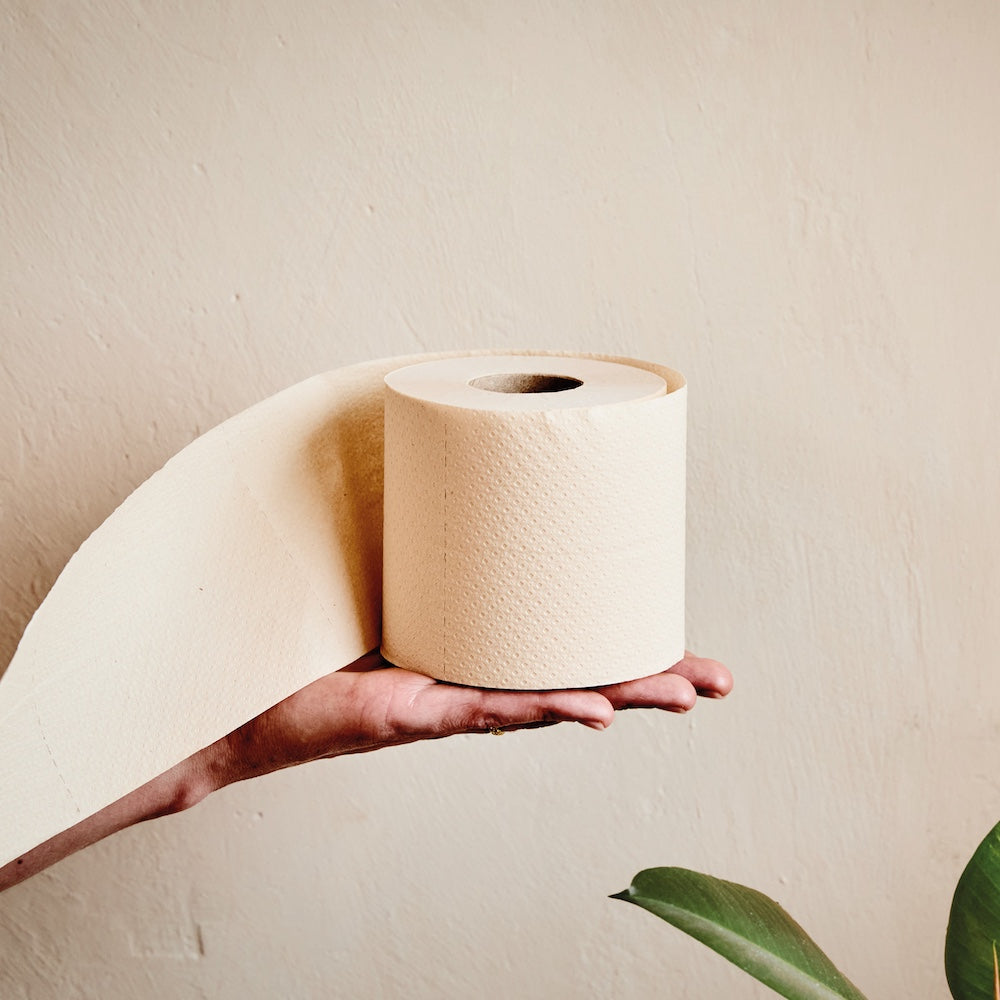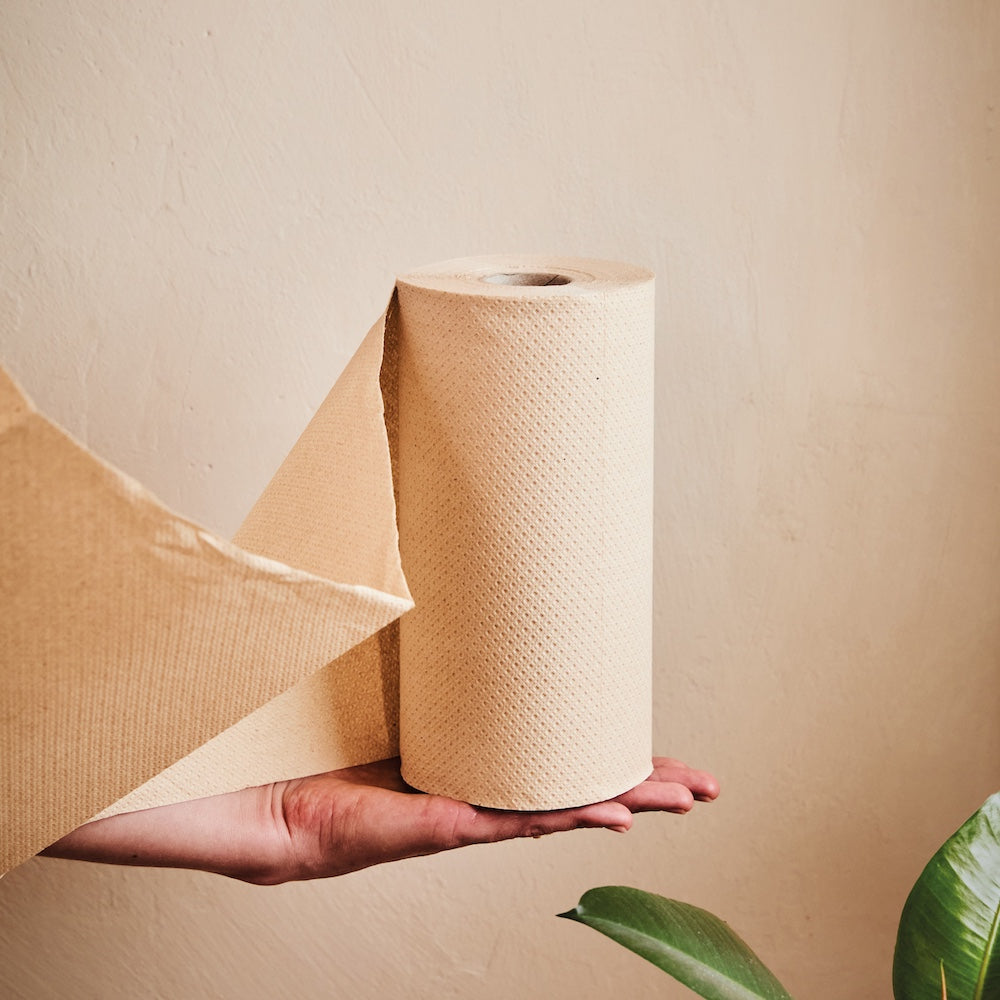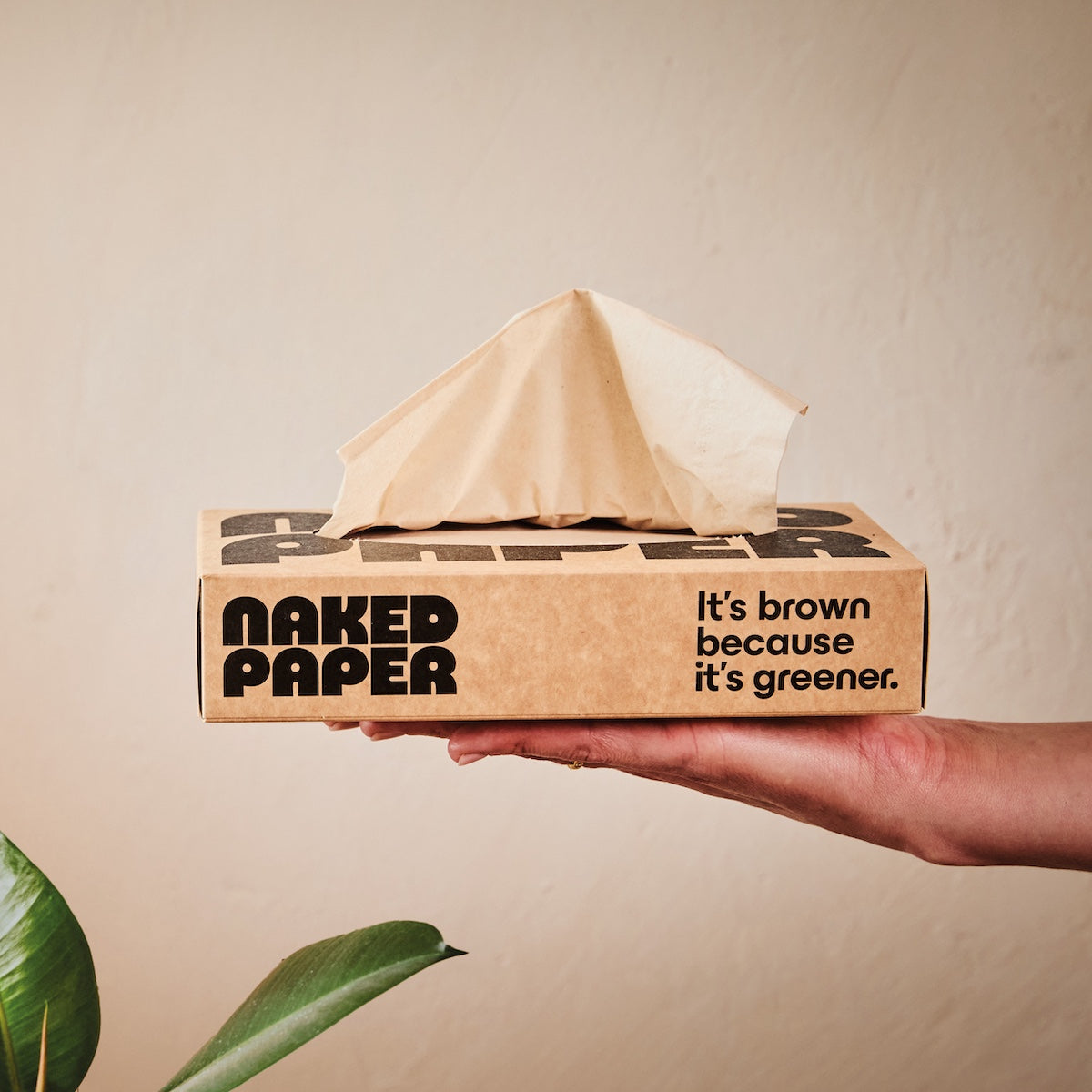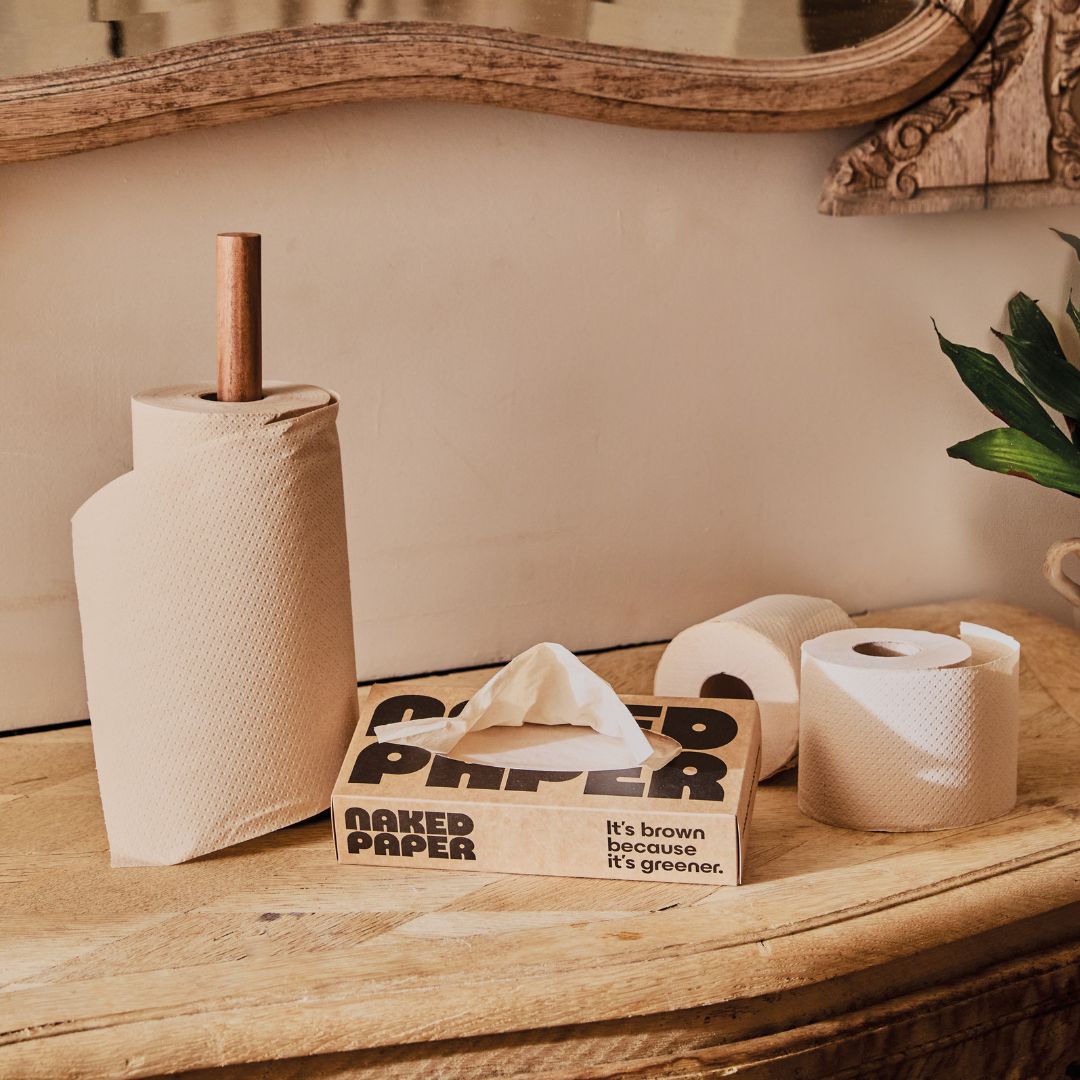Our response to the recent Which? article
Updated: January 2025
In April 2024 the UK's Which? magazine published an article claiming that our unbleached Naked Paper (formerly Naked Sprout) bamboo toilet paper is not made from 100% bamboo.
They have not shared the details or results of their testing with us, but we know our supply chain in detail and we know that we are only using bamboo to make our bamboo products. So over the past year we have continued to carry out our own research into the suitability of the TAPPI-T 401 testing protocol Which? have stated that they used.
Our research has covered:
- The likelihood of this specific testing method giving inconsistent results for unbleached bamboo
- Why this specific testing method gives inconsistent results for unbleached bamboo.
Test one: We sent sheets of toilet paper from a single roll of Naked Paper to different testing facilities in different countries and asked them to perform the TAPPI-T 401 test and provide an analysis of the fibre content. The assessments given by different testing facilities - all testing sheets from the same roll - were widely inconsistent. This supports our decision not to rely on TAPPI-T 401 testing to verify our supply chain.
We’ve provided further details of this testing at the end of this post.
Test two: We approached the paper experts at the Centre Technique du Papier (CTP) to investigate the findings of our own research following the Which? report. The CTP performed the same test on our products and have confirmed that the bamboo we use looks too similar to hardwood to be able to positively identify it using the staining method of the TAPPI-T 401 test.
They have provided this slide to show the similarity of the long fibres in both samples when viewed under a microscope. After running this assessment their conclusion was that “the quantitative determination of the fibrous composition is impossible to perform.”
You can see further details of the testing at the end of this post.
Radical transparency
Immediately after the Which? report we announced a policy of radical transparency, that we would publicly provide all of the evidence that proves we are actually making our products in a sustainable way. This pledge has been fulfilled in the form of our Green Credentials page, live on our website since June 2024.
On this page we provide up-to-date evidence in line with the UK government's Green Claims Code that backs up every claim we make; that our rolls are made without bleach, that our factory makes our products without fossil fuels, that our toilet paper contains no PFAS or BPA, and much more. We’re incredibly proud of the work that went into this page, and what it says about us as a sustainable business.
FSC certification
Finally for this update, in the months since the Which? report, the Forest Stewardship Council (FSC), who certify our bamboo supply, have completed a thorough review of the bamboo in our supply chain. Following their own independent audit they have publicly confirmed that they found no issues within our bamboo supply chain and the certification of all of our suppliers remains valid.
Update over, we'll return you to our original post from April 2024 - but before that we'll say a big thank you to our wonderful customers for their support this year, and to all of our suppliers, colleagues, and partners that make Naked Paper what it is.

Original post - April 2024
It's been a challenging week for our team. In their April Edition, Which? published a review of sustainable toilet rolls, where they suggested that our supply chain is not adequately controlled, and our bamboo products are not made from bamboo.
We want to assure all of our customers that we only use bamboo to make Naked Paper bamboo products, and share this statement from our founder Leila:

"Myself & the team are incredibly disappointed to see the recent article in Which?, suggesting our amazing Naked Paper bamboo toilet paper isn’t bamboo.
At Naked Paper we go to significant lengths to ensure what we tell you and what we sell you is the very best – especially in terms of sustainability.
We’re aware the test done by Which? suggests that our bamboo toilet roll doesn’t contain any bamboo. So we wanted to take this opportunity to share a little about the test. And a lot about our methods to ensure our bamboo supply chain is robust.
So let’s start with the test.
There’s no perfect way right now of testing unbleached bamboo toilet paper. We’ve been looking for a test that’s accurate, reliable and implementable within our supply chain for a long time.
The problem is, unbleached bamboo can show very similar properties to softwood and hardwood. This makes visual recognition by the laboratory particularly difficult. Especially when, like us, you don’t bleach your toilet roll.
On the question around the validity and reliability of the test. Some of our competitors are calling it a “cop out” to challenge the results. But even the people that accredit the test admit that it has limitations and say ‘considerable variation in the precision is to be expected’ (source).
We have been reassured to see TAPPI’s recent statement that they would be open to developing a bamboo-specific fibre test and we've contacted their team to start the process of creating a specific peer-reviewed test method to add to their catalogue.
We understand that just because the test is unreliable we shouldn’t expect you to believe us when we say our toilet roll is bamboo.
We know that trust requires evidence.
Therefore, we are moving to a policy of radical transparency. So every one of our customers can see our Forest Stewardship Council (FSCC007915) independently verified, full supply chain data.
This means that you’ll be able to see exactly where our bamboo is grown, exactly how it comes to our factory, and exactly what goes into our products to produce your toilet paper. This will make us the first toilet roll brand to do so.
Over the next few weeks we will make our supply chain data easy to access and easy to understand. But in the meantime, here’s the raw data. We have it, so you should have it too.
We have a full lifecycle analysis of the carbon footprints of our products, in line with ISO14067. You can view this here. We would love for other companies to publish their lifecycle analysis to help consumers make informed choices.
Our factory is a B Corp. As well as ISO50001 compliant so you can trust us when we talk about our energy use. We have rigorous environmental management systems in place in line with ISO14001 and you can see proof of that too.
We strive to ensure independent verification in everything we do. From being a B Corp ourselves, to our supply chain and our production at a B Corp certified factory. At every stage, we at Naked Paper aim to ensure everything we do is provable.
We will continue to ensure absolute transparency around our green claims & with our customers."
You can read our full response to the Which? article here.

Appendix 1: May 2024 testing
As part of our ongoing research into the TAPPI T 401 testing method used by Which?, our legal team sent sheets from a single Naked Paper bamboo toilet roll to four different laboratories in different countries.
We asked these laboratories to provide percentage calculations of the raw material, using the TAPPI T 401 method. The results varied widely, despite the fact they were all testing the same toilet roll – proving that TAPPI T 401 is not a reliable method for testing our products.
Laboratory Results
Laboratory 1: Stated that the majority of fibres were probably bamboo but that they could not confidently provide a percentage because of problems with identification of the fibres.
Laboratory 2: Stated that the sample was 62.6% bamboo, with the rest of the sample being hardwood.
Laboratory 3: Stated that the sample was 49% bamboo, but reported some possible issues with identification of the fibres.
Laboratory 4: Stated that the sample was a mixture of bamboo and other hardwood but they could not give a percentage because these fibres look too similar under a microscope.
Analysis
-
All of the laboratories gave different assessments of fibre content
-
All of the laboratories differed in their confidence that the test could produce definitive results on the sample.
-
The accepted margin of error given in the TAPPI T 401 testing document is a 3% difference. The results from the laboratories that were willing to provide percentages fall far outside of this difference
- Three of the laboratories highlighted challenges in definitive fibre identification relating to production methods or the similarity of bamboo with other kinds of fibre when examined under a microscope.
Conclusion
The wide range of results from a single toilet roll illustrates that TAPPI T 401 is not a suitable or reliable method for assessing the fibre content in Naked Paper bamboo products. This supports the decision we made in 2021 when we reviewed our supply chain as part of our move to manufacturing in Europe and decided to adopt a method of supply chain verification similar to the larger suppliers such as Kimberley Clarke.
Historical results of TAPPI T 401 tests on our products have shown a range from 0% to 100% bamboo, with some tests unable to provide a percentage at all. These inconsistencies in test results cannot be explained by changes in materials or manufacturing methods – we haven’t changed how we make Naked Paper.
You can find the full logs of our supply chain and evidence of our sustainable manufacturing processes on our website.
Appendix 2: October 2024 testing
The Centre Technique du Papier (CTP) is an industrial research and development organisation based on the campus of the University of Grenoble, France. They are a hugely respected authority in applied research, consulting and expertise for the paper industry.
We approached them to investigate the findings of our own research, that there are species of bamboo used in papermaking that look too similar to hardwood to be able to positively identify them using the staining method of the TAPPI-T 401 test.
CTP undertook tests using the equivalent methodology Which? informed us they had used. The first aim of the test was to qualify and quantify the fibres in a sample of Naked Paper - and if this was not possible - to provide evidence of why it was not possible.
These images show what the bamboo we use to make Naked Paper looks like, and what hardwood pulp looks like, when tested using this method.

The long fibres present in both samples look exactly the same. After running this assessment their conclusion was that “the quantitative determination of the fibrous composition is impossible to perform.”
There’s another important detail in this report. Here is the up-close view of sheets of a Naked Paper bamboo toilet roll under the CTP microscope.

The box outlined in black states that unidentifiable fibre is either bamboo or bleached hardwood. Chemical analysis proves that there is no bleach present in Naked Paper, leaving only one option for that uncertain fibre, bamboo.
The test used for the Which? report has still not been made public or shared with us, but these are the results of the equivalent ISO methodology, performed by the best of the best when it comes to technical paper research, with a simple explanation of the result.




